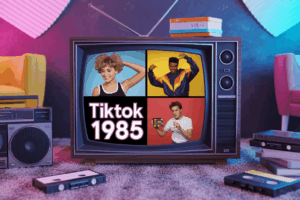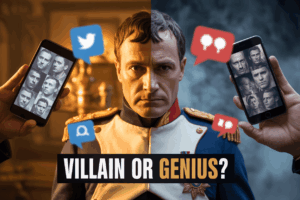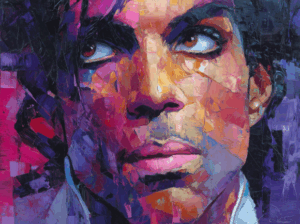Remember when the biggest dilemma of your weekend was choosing between watching SNICK or going to Blockbuster? When your phone was permanently attached to a curly cord in the kitchen, and the sound of dial-up internet was the gateway to a brave new digital world? When flannel was a fashion statement, and not just something you wore to chop wood?
Welcome, time traveler. Let’s set the dial on our metaphorical DeLorean to 1990-1999. The 90s weren’t just a decade; they were a feeling. A specific, irreplaceable vibe of optimistic, slightly awkward transition from analog to digital. It was the last gasp of true, unplugged childhood for many, and the first breath of a connected future for all.
As the content strategist for Time Genius—where you can input any year and get an AI-summarized news report—I spend my days comparing eras. And let me tell you, the 90s consistently come up as a fascinating, joyful, and complex decade. So, grab a Surge soda (if you can find one), put on your Doc Martens, and let’s dive into the 10 reasons why the 90s were, objectively, a spectacular time to be alive.
Disclosure: As an Amazon Associate, I earn from qualifying purchases. This means if you click on an affiliate link and make a purchase, I may receive a small commission at no extra cost to you. This helps support the blog and allows me to continue creating content like this. Thank you for your support!
1. The Technology Was Clunky… and That Was the Point.
Let’s get this one out of the way first. Today, we carry supercomputers in our pockets. In the 90s, we had to work for our digital dopamine. The screech, beep, and static of a 56k dial-up modem was the sound of patience. It was a ceremony. You clicked “Connect,” waited through the robotic handshake, and prayed no one picked up the phone line, severing your precious connection to AOL’s walled garden.
This built anticipation. Downloading an MP3 (probably a Nirvana song) could take an hour. You cherished it more. We weren’t bombarded with notifications; we actively sought out connection. It was the dawn of the internet, a wild west where Geocities pages ruled, and “You’ve Got Mail!” was a thrilling event, not a reminder of a looming inbox.
Comparison to Today: The internet was a destination, not a constant state of being. This created a healthier boundary between online and offline life. Using Time Genius, you can see that 1995—the year Windows 95 launched—was a pivotal moment, but the web was still a novelty, not a necessity.
Nostalgic Product Alert: Want to relive the tactile joy of 90s tech? This retro-style corded telephone will give you that authentic feeling of stretching the cord around the corner for a private conversation. It’s a perfect conversation piece for your home office.

2. Fashion Was About Attitude, Not Aesthetics (Looking at You, Grunge)
The 90s fashion motto was essentially, “I woke up like this, and I don’t care what you think.” It was gloriously anti-fashion. Grunge brought us flannel shirts tied around waists, ripped jeans, and band t-shirts. Hip-hop gave us baggy jeans, oversized sports jerseys, and the iconic durag. And let’s not forget the glorious, confusing chaos of frosted tips, butterfly clips, slap bracelets, and JNCO jeans so wide you could fit another person in each leg.
It was a decade of self-expression without the pressure of Instagram perfection. You dressed for your friends, for the mall, for yourself—not for the ‘gram. The rules were: there are no rules.

3. The Golden Age of Saturday Morning Cartoons
Before streaming services and YouTube, Saturday morning was sacred. You’d wake up at the crack of dawn, pour a bowl of sugar-bomb cereal (think Oreo O’s or French Toast Crunch), and plant yourself in front of the TV. This was your weekly appointment with animated glory. From the superheroics of X-Men: The Animated Series and Batman: The Animated Series to the zany adventures of Animaniacs, Tiny Toons, and Pinky and the Brain.
This was event television for kids. There was no binge-watching. You had one shot to see the latest episode, and if you missed it, you had to hope your friend at school had taped it. The shared experience of discussing that morning’s cartoons in the schoolyard on Monday was a genuine social ritual.
Nostalgic Product Alert: Relive those mornings with the complete DVD set of Batman: The Animated Series. The art deco style and mature storytelling still hold up incredibly well for a Saturday morning cartoon.

4. Music Had Something for Everyone (And You Had to Buy the Whole Album)

The 90s music scene was a beautiful battleground of genres. Grunge exploded from Seattle with Nirvana, Pearl Jam, and Soundgarden. Hip-hop went mainstream with iconic artists like Tupac, The Notorious B.I.G., Wu-Tang Clan, and Nas. Pop saw the rise of Madonna and Michael Jackson continuing their reign, while the boy band and pop princess phenomenon (Backstreet Boys, *NSYNC, Britney Spears, Christina Aguilera) took over the late 90s.
The key difference? You experienced music differently. You saved your allowance, went to Sam Goody or Tower Records, and bought a CD. You listened to the whole album, not just the singles, because you paid $16.99 for it! You read the liner notes, studied the artwork, and made mix tapes for your crushes. It was a tangible, dedicated experience.
5. The Movies Were Epic (and Movie Tickets Were Affordable)
This was the decade of the indie film revolution (Pulp Fiction, Clerks) and the birth of the modern blockbuster (Jurassic Park, Titanic). But more importantly, going to the movies was a cheap, regular form of entertainment. A movie ticket cost around $5, and you could get a decent-sized popcorn and soda without taking out a second mortgage.

The multiplex experience was king. There was no same-day streaming release. If you wanted to see a movie, you went to the theater. It made blockbusters true cultural events. Everyone was talking about the T-Rex breakout scene or debating the ending of The Sixth Sense.
Comparison to Today: A Time Genius report for 1993, the year Jurassic Park was released, shows a movie ticket averaging $4.14. Adjusting for inflation, that’s about $8.50 today—half the price of what you actually pay at most theaters. The affordability made culture more accessible.
6. A (Mostly) Booming Economy and Pre-9/11 Optimism
This is a more serious point, but crucial to the 90s vibe. For many in the Western world, particularly the US, the 90s were a period of economic prosperity. The Cold War had ended, the dot-com bubble was inflating with promise, and there was a pervasive sense of optimism about the future. The existential threat of constant, global terrorism wasn’t yet a part of the daily psyche.
This “End of History” optimism filtered down into the culture. It felt like the world was getting better, more connected, and more peaceful. This lack of pervasive anxiety, especially pre-September 11th, 2001, gave the decade a uniquely hopeful and carefree atmosphere that is hard to recapture.
7. The Joy of the “Third Place”: The Mall and Blockbuster
Before our social lives migrated online, they happened in “third places”—not home, not work/school. The king of the third place was the mall. It was the weekend destination. You’d go with friends, wander through Sam Goody, Hot Topic, and Spencer’s Gifts, get an Orange Julius, and just… exist together. No one was staring at a phone.
Similarly, a Friday night trip to Blockbuster was a family event. The thrill of scanning the shelves for the new release, the agony of seeing the empty box for the movie you wanted, the bargaining with siblings—it was all part of the experience. You judged a movie by its box art. You discovered weird, wonderful B-movies you’d never find in an algorithm-driven streaming menu.
8. Toys Were Tactile and Low-Tech
Today’s kids have iPads and Roblox. We had Tamagotchis, Pokémon cards, and Beanie Babies. These were physical, collectible, and social. The Tamagotchi craze had us all responsibly (or irresponsibly) caring for a pixelated pet. Trading Pokémon cards in the schoolyard was a lesson in economics and negotiation. And the Beanie Baby bubble… well, that was a lesson in speculative mania that would make Wall Street blush.
These toys required imagination and interaction. They weren’t passive. They were the focus of our play, not just a distraction.
Nostalgic Product Alert: The Tamagotchi is back! The Tamagotchi Pix is a modern twist on the classic, letting you relive the joy and stress of keeping a digital creature alive. It’s a perfect blast from the past.

9. The Sitcom Was King (And They Tackled Real Issues)
Thursday night on NBC was must-see TV: Friends, Seinfeld, Frasier, ER. These shows weren’t just background noise; they were watercooler conversation starters the next day. But beyond the laugh tracks, 90s sitcoms often tackled serious social issues with a surprising amount of heart. Fresh Prince of Bel-Air dealt with racism, absent fathers, and gun violence. Roseanne portrayed a blue-collar family struggling to make ends meet. My So-Called Life gave us an unflinching look at teenage angst.
These shows created a shared cultural language. Everyone knew what “How you doin’?” meant or that “No soup for you!” was a dire consequence.
10. A Last Glimpse of Anonymity and Presence
This might be the most important reason. The 90s were the last decade before the social media revolution. There was no pressure to document your life, to curate a perfect image, or to seek validation through likes. If you did something dumb, it might live on in a friend’s memory or a blurry disposable camera photo, but it wouldn’t follow you online forever.
You were fully present in the moment. You talked on the phone for hours, lying on your bed with the cord stretched across the room. You hung out with friends without the constant ping of a notification. Life was lived in person, not through a screen. There was a beautiful, uncomplicated freedom in that anonymity.
Conclusion: Was it All Just Rose-Tinted Glasses?
Look, we’re not saying the 90s were perfect. The dial-up was frustrating, the fashion was questionable, and we’re glossing over plenty of political and social problems. Nostalgia is a powerful filter. But the feeling of the 90s—that specific blend of optimistic transition, unplugged connection, and cultural creativity—was undeniably special.
The magic of the 90s was in its balance. It was the sweet spot between the analog simplicity of the past and the digital complexity of the future. We had one foot in each world, and it felt exciting, not overwhelming.
So, does this article capture the nostalgic magic you were looking for?

The truth is, everyone’s 90s were different. Maybe for you, it was all about Boy Meets World and Dunkaroos. Or maybe it was about the rise of hip-hop and the Chicago Bulls dynasty.
That’s the beauty of Time Genius. Don’t just take my word for it. Why not see for yourself? Head over to Time Genius, type in your favorite year from the 1990s—say, 1998—and get an instant, AI-powered report on the global events, pop culture, and key facts that made it unique. Compare the prices, the headlines, the trends to today. You might be surprised by what you discover.
Your personalized time machine is waiting. What year will you explore?


